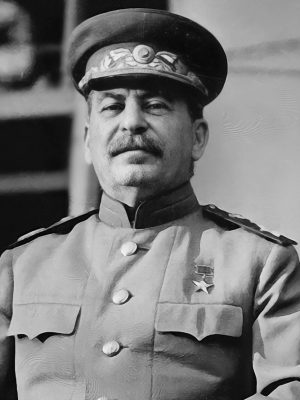On August 28, 1939, the Soviet dictator, Joseph Stalin, signed a non-aggression pact with Adolf Hitler to keep Russia from being invaded by the mighty Nazi army. The pact also allowed Stalin and Hitler to divide Poland between themselves. At the same time, Stalin also knew the pact would give him the time he needed to strengthen his army. After this, Germany invaded Poland on September 1, 1939, followed by Russia 16 days later. However, despite the non-aggression pact, Stalin still felt uneasy and believed that Hitler might invade Russia in the near future. Although Stalin was right in thinking that the Germans were not foolish enough to invade during the ruthless Russian winter, he was surprised by the Germans’ attack in the summer of 1941.
Russia lost so many soldiers in the opening months of the war. The Nazis encircled Leningrad and were moving towards Moscow. Meanwhile, Kyiv was also surrounded and was eventually occupied by the Nazis. However, while Kyiv was being contested, Moscow was able to strengthen its fortifications against the anticipated German attack. Stalin knew that winter was nearing and commanded a scorched earth strategy, wherein the Russian frontline, while backtracking, destroyed anything that the Nazis could use. The tactic meant that German supplies and weapons could only come from Germany.
In October 1941, German troops were only 25 kilometers away from Moscow. Twenty million people escaped from the city, but Stalin chose to stay in a bomb shelter. Nazi troops stormed Moscow in November, but Soviet troops held fast. Stalin ordered a counteroffensive which forced the German troops to back off, and by January, they were pushed back as far as 300 kilometers. After this, the Germans never managed to come near Moscow again. Roused by his success, Stalin recruited new soldiers and made regular assaults on the German troops. This strategy kept the Nazis at bay until spring came, and the Nazis marched towards Stalingrad. Stalin turned up his aggressive tactics and declared that troops that pulled back from the battlefield and left weapons behind would be executed as traitors. By early 1943, Russian troops had surrounded the Germans in Stalingrad, forcing them to surrender. Around 1.5 million German soldiers died in the course of five months in what came to be known as the Battle of Stalingrad. The Russians had suffered horrific losses, but the victory started the downward momentum for the German army.
At the Tehran Conference in November 1943, Joseph Stalin asked Franklin D. Roosevelt and Winston Churchill to create a diversion to draw the German military offense away from Russia. As a result, the Allied invasion of Sicily was launched, followed a year later by the Allied Invasion of Normandy. Stalin was certain that Russia would have fallen eventually to the German war machine without a diversion.
Several months before the war ended, Churchill was already worried about the Communist spread in Eastern Europe. And so, the three powerful leaders — Roosevelt, Stalin, and Churchill met at the Moscow Conference in 1944 and at the Yalta Conference in 1945 — and discussed the new boundaries that should be enforced after the war. These new boundaries later became the boundaries during the Cold War.
From July 17 to August 2, 1945, the “Big Three,” composed of Stalin, Churchill, and Truman, met together in Potsdam to discuss further the world order after the war and the policies to address the results of the war. At the beginning of the conference, Truman received word that the U.S. had successfully detonated the world’s first atomic bomb.
Before this development, Stalin committed to helping the American forces in their fight against Japan. Now that the U.S. had the most powerful bomb in history at its disposal, Truman and his cabinet were no longer eager to pull Stalin into the Pacific war. If the bomb could send Japan to its knees without sending in American troops, it could eliminate the possibility of Stalin participating in the division of Japan. In the second week of the conference, Truman moved close to Stalin, and without the help of an interpreter, he plainly told the Soviet leader that the U.S. had a new, terribly destructive weapon. Stalin remained seemingly unconcerned and only remarked that he hoped the U.S. would use the weapon effectively against the Japanese. Stalin remained calm despite Truman’s news because he received intelligence reports about the atomic bomb project as early as 1941.
